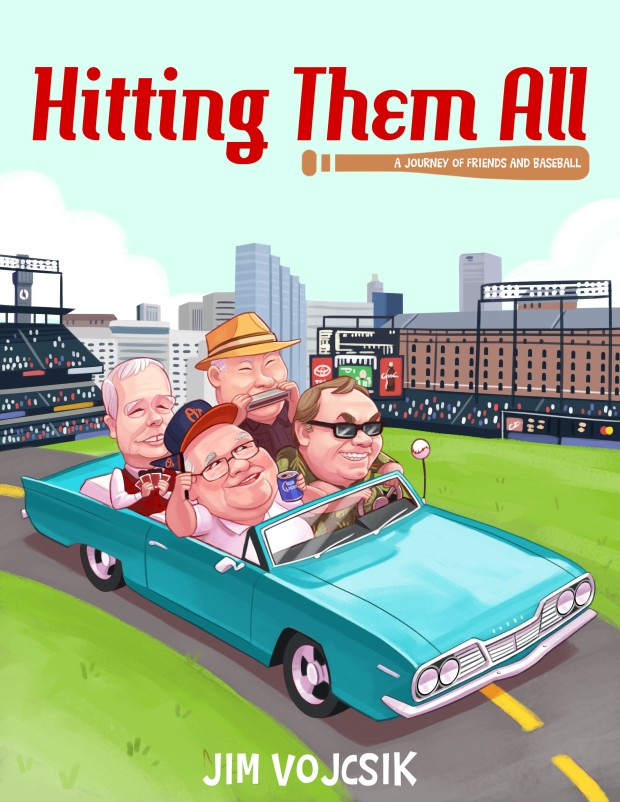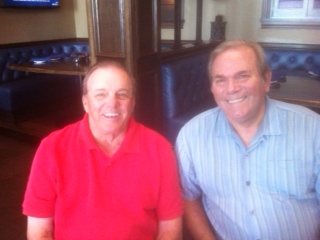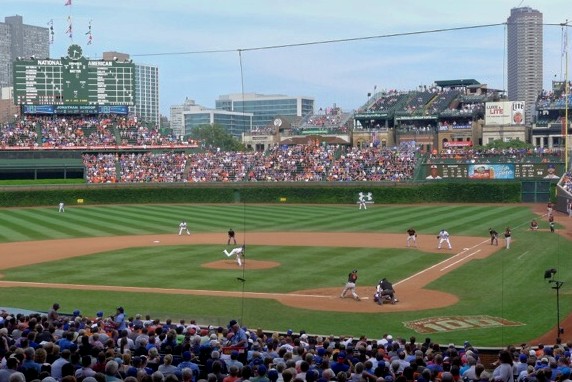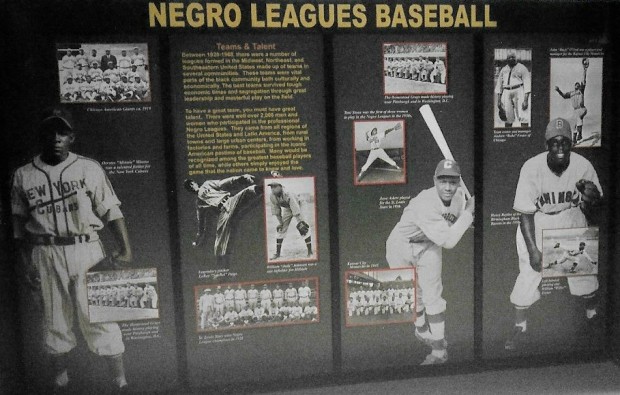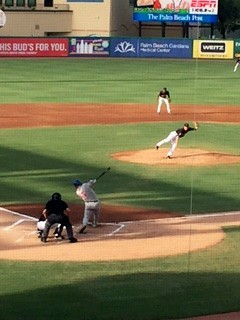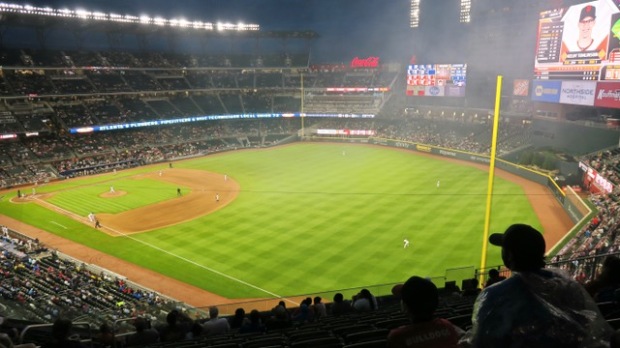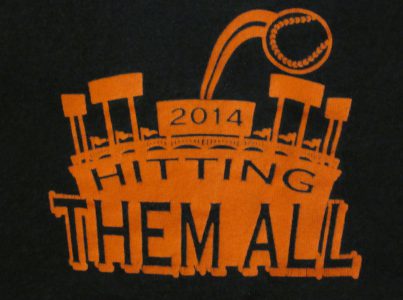“Baseball is designed to break your heart. The game begins in the spring when everything begins again and it blossoms in the summer, filling the afternoons and evenings, and then as soon as the chill rains come, it stops and leaves you to face the fall alone.” –Bart Giamatti, former Major League Baseball Commissioner
For me, the saddest day of the year is the day after the World Series is over. Baseball fills a void between Spring Training when pitchers and catchers report in February until the last out of the World Series is recorded in November. While the “Hot Stove League” keeps the fire burning with trade rumors, free agent signings and actual deals during the winter, nothing can replace the daily pleasure I get from watching the games, scanning the box scores and watching baseball highlights on a daily basis during the regular season. I subscribe to the notion once espoused by the deceased former Associate Supreme Court Justice, William O. Douglas, that he read the sports page in the newspaper first so he could read about man’s accomplishments before reading the rest of the news about his failures.
Hail to the Astros for a hard-fought victory in an exciting seven game World Series over the Los Angeles Dodgers — the last clash of two super teams with more than 100 wins occurred in 1970 when the Baltimore Orioles squared off against the Cincinnati Reds “Big Red Machine.” The Astros bringing home the first World Series trophy in 55 years to the flood-ravaged Houstonians was reminiscent of the joy the Saints gave to the people of New Orleans during their march to the Super Bowl in 2005 in the aftermath of Hurricane Katrina.
A Thumbnail Sketch of the Astros’ Franchise
The Astros entered the National League in 1962 as an expansion team, the Houston Colt .45’s, along with the New York Mets. They played two seasons at Colt Stadium before they changed their name and moved to the Astrodome, “The Eighth Wonder of the World.” The roster in the first season was filled primarily through an expansion draft after the 1961 season where the Colt .45’s and the Mets selected players left unprotected by the other National League teams, not much of a recipe for success.
In their inaugural season, the Colt .45’s were led by stalwarts such as outfielders, Al Spangler and Roman Mejias, player-manager and infielder, Bob Aspromonte, starting pitchers, “Turk” Farrell and Dave Giusti, and relief pitcher, Bobby Shantz, at five feet, six inches and 142 pounds. A footnote about Bobby: he was a good friend and minor league teammate of father, Jim, and served as Dad’s best man at his wedding. He won the American League Cy Young Award in 1952 with the Philadelphia Athletics, played on several New York Yankees’ championship teams and spent one year in Houston before ending his career with the St. Louis Cardinals, Chicago Cubs and Philadelphia Phillies. The Colt .45’s finished their inaugural season in eighth place in the National League, ahead of the Chicago Cubs and their expansion cousins, the New York Mets, who lost a record 120 games.
In 1963, Houston recalled some promising young talented players who made their major league debuts, including a future Hall of Fame second baseman, “Little Joe” Morgan, who was eventually traded to the Cincinnati Reds, slugging outfielder, Jimmy Wynn, the “Toy Cannon,” and first baseman, Rusty Staub, who had a stellar career and eventually became one of the greatest left-handed pinch-hitters of all-time. My friend, Bill Hilbig, who was born and raised in Texas, recalled seeing his first major league game at Colt Stadium and getting autographs from Walt Bond and several Houston players in the parking lot after the game.
The Astros were habitually stuck in the second division with a losing record until 1969 when they reached the .500 mark with a record of 81 wins and 81 losses for the first time in the year that the “Amazing” New York Mets won their first World Series. But the Astros were a team on the rise, and led by Texas legend and fire ball hurler, Nolan Ryan, they advanced to their first play-off and National League Championship Series in 1980, where they lost an exciting series to the eventual World Champion, Philadelphia Phillies. In 1986, they lost another dramatic and heart-breaking NCLS to the New York Mets, the eventual World Series Champion.
In the 1990’s, the Astros enjoyed a period of consisent success with the additions of Hall of Fame players, Craig Biggio and Jeff Bagwell, who teamed up with Lance Berkman, Derek Bell and Sean Berry to form a formidable line-up known as the “Killer B’s.”
During the 2000 season, the Astros moved to a new ballpark, built on the site of the old train depot, Union Station, that eventually was named, Minute Maid Park, and is their current home. Minute Maid Park is a lyrical bandbox of a ballpark with a retro-modern design, a functional retractable roof and some quirky features. The Astros benefited from a large and boisterous home crowd and enjoyed a competitive advantage in their house during the 2017 baseball play-offs.
In 2005, the Astros added former New York Yankees’ pitchers, Andy Pettite and Roger Clemens, to a star-studded line-up of Biggio, Bagwell, Berkman, Jeff Kent and Roy Oswalt and made it to their first World Series where they got swept by the Chicago White Sox. The team struggled through a re-building process with four seasons of 100 or more losses despite the presence of outstanding players like Jose Altuve, the MVP front-runner in 2017.
But the team’s management and front office remained steadfast, stayed the course and re-built the team from within the organization. They embraced modern baseball analytic concepts, and eventually, their strategy paid off. They built a roster with exceptionally talented homegrown players including, Dallas Keuchel, the 2015 Cy Young Award winner, Rookie-of-the-Year and budding superstar shortstop, Carlos Correa, scintillating center fielder, George Springer, the 2017 World Series MVP, third-base whiz kid, Alex Bregman and super utility man, Marvin Gonzalez. This year, they added some key missing pieces such as a veteran catcher and clubhouse leader, Brian McCann, imported a Cuban first baseman with a big stick and a spiked hairdo that looks like a Merganser duck, Yuli Gurriel, and acquired a future Hall of Fame pitcher, Justin Verlander, from the Detroit Tigers in a deal that was approved seconds before the trade deadline expired and put the finishing touches on a championship team. Ironically, the Dodgers declined a trade for Verlander, even though he wanted to play for them, because they didn’t want to take on his long-term contract and high salary. Instead, they acquired Yu Darvish in a deal with the Astros’ rival, the Texas Rangers, in a move you could say altered the outcome of the World Series.
In 2014 before they achieved their success, Sports Illustrated predicted in a magazine cover story that the Astros would win the World Series in 2017. In order to make that prediction come true, the Astros had to defeat a formidable trio of well-endowed, high profile, major market teams with huge payrolls and large bank accounts, the Boston Red Sox, New York Yankees and Los Angeles Dodgers. They passed those tests with flying colors.
Final Thoughts About the Astros and the 2017 Season
I became a believer in the Astros during Spring Training when my buddy, Bill, and I watched them play a game at their new baseball complex in West Palm Beach, which they share with the Washington Nationals. Most of their starting line-up was on the field that day and Dallas Keuchel was on the mound, recovering from an injury-marred 2016 season. I was impressed with how they put the barrel of the bat on the ball and Keuchel shut down the opposition effectively with good control of his fast ball and change-up pitch combination. I knew I was seeing something special so I bought an Astros’ baseball hat for the first time to wear when I played golf.
The Astros’ second base and shortstop combination of Jose Altuve and Carlos Correa is one of the most productive middle infield duos in major league history. They are on a short list with Hall of Famers, Jackie Robinson and Pee Wee Reese of the Brooklyn Dodgers, Joe Gordon and Lou Boudreau, of the 1940’s Cleveland Indians and Rogers Hornsby and Travis Jackson of the 1920’s New York Giants. You can look it up.
The Astros’ owner, Jim Crane, is a successful businessman and a scratch handicap golfer. He owns an exclusive golf course, the Floridian, and property that he is developing on the St. Lucie River in Palm City, five minutes away from where I live. High-powered members at his championship golf club include CEO’s, celebrities, entertainers and high profile athletes from other sports. Former President Barak Obama played golf at the Floridian twice during his terms in office.
Like the characters in the popular HBO television series, “Game of Thrones,” I know that winter is coming. Even in South Florida, there is a hint of cooler weather in the air and Daylight Savings time starts this weekend, making the days shorter and the nights longer and darker. But unlike the uncertain future faced by the characters in Westeros, I am certain that baseball will return next spring, because as the great baseball writer, Thomas Bowsell, wrote, “Time begins on Opening Day.”
